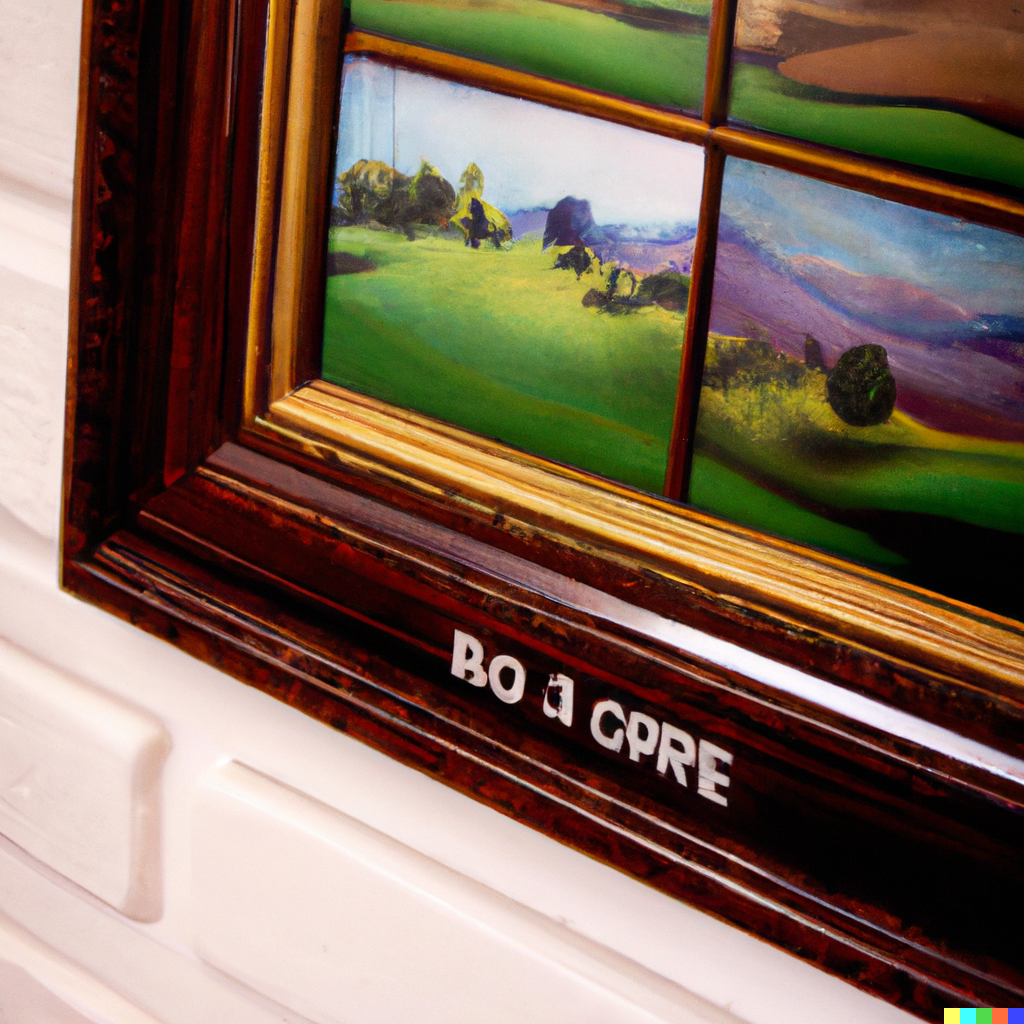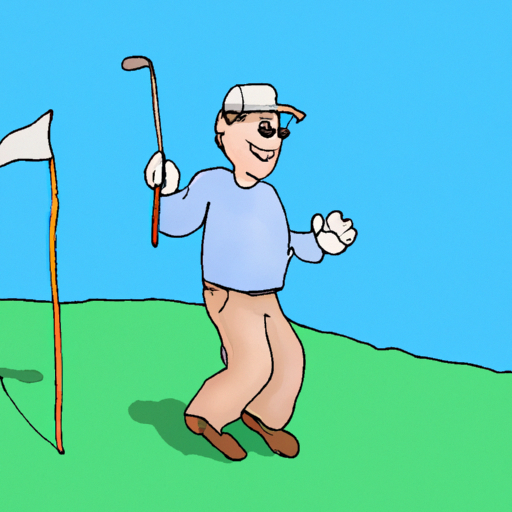Golf Terms To Know: Definitions, Slang And Lingo For Beginners
If you are a beginner to the sport of golf, you may be overwhelmed by the vast array of terms, slang, and lingo that can be used within the game. It can be difficult to keep track of what each term means and when it is appropriate to use it.
This confusion can be quite intimidating and can discourage beginners from feeling confident in their golf game. Not understanding the terms and slang can also lead to misunderstandings, which can lead to unnecessary friction between players.
The good news is that with a little bit of knowledge, any beginner can understand the language of golf and feel confident in their game. By taking the time to learn the definitions and proper usage of golf terms, you will soon be speaking golf like a pro.
To get started, a great resource are these golf terms to know, which provides definitions of all the terms and slang used in the game. There are also many online tutorials and guides that provide helpful examples and tips on using the correct language on the golf course.
So don’t be intimidated by golf terminology and slang. Take the time to do your research and learn the basics. With a little effort, you can quickly become a pro at speaking the language of golf.
So read on.
 Golf has its own unique language and that's why we've compiled this comprehensive list of terms and definitions. Get up to speed with the slang and lingo of the game with this beginner-friendly guide.
Golf has its own unique language and that's why we've compiled this comprehensive list of terms and definitions. Get up to speed with the slang and lingo of the game with this beginner-friendly guide.Beginner’s Guide To Golf Terms, Definitions, Slang And The Lingo Of The Game
Please keep in mind: It's important to remember, however, that proper golf etiquette dictates that players should refrain from using derogatory language or terms that may offend others.
19th hole
19th hole
A term for the bar or clubhouse where golfers gather after a round.
Above the hole
Above the hole
A position on the green where the ball is higher than the level of the hole.
Ace
Ace
Hitting the ball into the hole in one stroke, also known as a "hole-in-one."
Air shot
Air shot
A shot that misses the ball completely.
Albatross
Albatross
A score of three strokes under par for a hole, also known as a "double eagle."
Apex
Apex
The highest point of the arc of a shot.
Approach
Approach
A shot played from the fairway towards the green.
Attend the flag
Attend the flag
To remove the flagstick from the hole when a player is putting.
Back nine
Back nine
The final nine holes of an 18-hole course.
Ball mark
Ball mark
A small indentation on the green made by the ball when it lands.
Banana ball
Banana ball
A shot that curves sharply in the opposite direction of a hook or slice.
Beach
Beach
Another term for a sand trap.
Below the hole
Below the hole
A position on the green where the ball is lower than the level of the hole.
Best ball
Best ball
A type of golf competition where the lowest score on each hole is used to determine the team's score.
Birdie
Birdie
A score of one stroke under par for a hole.
Blind shot
Blind shot
A shot where the player cannot see the target or the path to get there.
Bogey
Bogey
A score of one stroke over par for a hole.
Bogey golfer
Bogey golfer
A golfer who consistently scores one stroke over par for each hole.
Break
Break
The amount of slope on the green that affects the direction a ball will roll.
Breakfast ball
Breakfast ball
Same as mulligan. A do-over of a shot, not counted in the official score.
Bunker
Bunker
A depression on the course filled with sand, also known as a "sand trap."
Caddie
Caddie
A person who carries a golfer's clubs and provides advice during the round.
Carry
Carry
The distance a shot travels in the air before it lands.
Chip
Chip
A shot played from just off the green towards the hole, using a lofted club.
Chunk
Chunk
When you hit the ground with the leading edge of your club before you hit the ball. This is a mishit and it doesn’t make you smile.
Compression
Compression
The amount of force that is applied to the ball when it is struck, which can affect its distance and flight. Different balls have different compression.
Condor
Condor
A score of four strokes under par for a hole, a rare and impressive feat.
Divot
Divot
A piece of turf that is displaced by a golf club when hitting the ball.
Dogleg
Dogleg
A hole that has a bend or curve in the fairway.
Double bogey
Double bogey
A score of two strokes over par for a hole.
Double eagle
Double eagle
A score of three strokes under par for a hole, also known as an "albatross."
Draw
Draw
A shot that starts to the right of the target and then curves back towards it (for a right-handed golfer).
Drop
Drop
The act of releasing the ball from a specific height after taking a penalty stroke.
Duffed shot
Duffed shot
A shot that is poorly struck. Hitting the ground too deep before the ball.
Eagle
Eagle
A score of two strokes under par for a hole.
Fade
Fade
A shot that curves slightly to the right (for a right-handed golfer), but not as sharp as a slice.
Fairway
Fairway
The area of the course between the tee box and the green that is well-manicured and ideal for hitting the ball.
Fat shot
Fat shot
A shot that hits the ground before reaching the green, often caused by making contact with the ball too low on the clubface. This type of shot typically results in a loss of distance and may cause the ball to roll off course or into a hazard. A fat shot is often caused by swinging too hard or failing to properly make contact with the ball, resulting in the clubhead "bottoming out" before hitting the ball. To avoid hitting a fat shot, it is important to maintain good posture and balance throughout the swing and to make sure to make solid contact with the ball.
Flag
Flag
The colorful fabric attached to the flagstick that indicates the location of the hole on the green.
Flop shot
Flop shot
A high, soft shot played with a wedge that lands and stops quickly.
Flub
Flub
A shot that is poorly struck.
Follow through
Follow through
The part of the swing that occurs after the ball is struck.
Fore
Fore
A warning shouted to alert other players that a shot may hit them.
Four-ball
Four-ball
A type of golf competition where two players play as a team and each plays their own ball, with the best score on each hole counting towards the team's score.
Foursome
Foursome
A type of golf competition where two players play as a team and alternate hitting the same ball.
Free drop
Free drop
A shot taken without penalty from a specific location on the course, often after a ball has come to rest in a hazard or an unplayable lie.
Fringe
Fringe
The area around the green where the grass is longer than on the green but shorter than in the rough.
Frozen rope
Frozen rope
A shot that goes very straight and low to the ground.
Gimme (Gimmie)
Gimme (Gimmie)
A short putt that is conceded by the opponent, meaning it does not have to be played.
Golf cart
Golf cart
A small vehicle used to transport golfers and their equipment around the course.
Grain
Grain
The direction in which the grass on the green grows, which can affect the direction and speed of a putt.
Green
Green
The area of the course where the hole is located and the grass is cut very short.
Gross score
Gross score
The total number of strokes taken during a round, including any penalties.
Ground under repair (GUR)
Ground under repair (GUR)
An area of the course that is temporarily closed for maintenance or repair, often marked by white lines.
Half shot
Half shot
A shot that is played with less than a full swing.
Handicap
Handicap
A system used to level the playing field among golfers of different skill levels.
Hazards
Hazards
Obstacles on the course that can make it difficult to play the ball, such as bunkers and water hazards.
Hole out
Hole out
To complete a hole by getting the ball into the hole.
Hole-in-One (HIO)
Hole-in-One (HIO)
Hitting the ball into the hole in one stroke.
Honour
Honour
The privilege of hitting the first shot on a hole, usually given to the player who had the lowest score on the previous hole.
Hook
Hook
A shot that curves sharply to the left (for a right-handed golfer).
Hosel
Hosel
The part of the clubhead that connects the shaft to the blade.
In play
In play
An area of the course where a player is allowed to hit their ball.
Interlocking
Interlocking
A type of grip where the index finger of the top hand is interlocked with the pinkie of the bottom hand.
Klunker
Klunker
A shot that is poorly struck.
Knee knocker
Knee knocker
A putt that is very short and easy to make.
Lateral hazard
Lateral hazard
A type of hazard that runs parallel to the fairway, marked by red stakes.
Lie
Lie
The position of the ball on the course, such as whether it is on the fairway or in the rough.
Line
Line
The intended direction a shot is supposed to take.
Links
Links
A type of golf course that is typically located near the coast and features sandy soil and few trees. Hitting the links means playing golf in general.
Lip
Lip
The edge of a bunker or other hazard.
Lip out
Lip out
A putt that hits the edge of the hole but does not go in.
Lob shot
Lob shot
A high, soft shot played with a wedge.
Marker
Marker
A person who keeps track of the scores in a group and helps enforce the rules.
Match play
Match play
A type of golf competition where each hole is treated as a separate contest.
Mixed
Mixed
A type of golf competition where players are paired in teams of a man and a woman.
Mulligan
Mulligan
A do-over of a shot, not counted in the official score.
Net score
Net score
The total number of strokes taken during a round, minus any handicap strokes.
Niblick
Niblick
An old-fashioned term for a nine iron.
Out of Bounds (OB)
Out of Bounds (OB)
An area of the course where a player is not allowed to play the ball, typically marked by white stakes.
Par
Par
The standard number of strokes a golfer is expected to take to complete a hole.
Penalty
Penalty
An additional stroke or strokes added to a player's score as a punishment for violating a rule.
Pigeon
Pigeon
A term used to describe a golfer who is not very skilled.
Pin
Pin
Another term for the flagstick.
Pin high
Pin high
A position where the ball is level to the hole as measured from where your shot was hit.
Pitch shot
Pitch shot
A shot played from just off the green towards the hole, using a lofted club. Pitch shots are typically played when the ball is lying in a position where it is difficult to hit a full shot onto the green, such as when it is on a slope or surrounded by bunkers. Pitch shots are usually played with a higher lofted club, such as a wedge, and are designed to land softly and stop quickly on the green. To hit a good pitch shot, it is important to use a smooth, controlled swing and to make sure to strike the ball cleanly with the clubface. Proper aim and distance control are also key to executing a successful pitch shot.
Play through
Play through
A situation where a group of players allows a faster group to play through and pass them on the course.
Plus golfer
Plus golfer
A plus golfer is generally considered to be a more skilled golfer than a scratch golfer, who has a handicap of zero and is expected to shoot par or better on most courses. In order to be considered a plus golfer, a player typically needs to have a consistently low score and be able to handle a variety of shots and course conditions. Plus golfers are often able to hit a wider range of shots, including fades and draws, and have a good feel for distance control and putting. They may also be more comfortable playing in competitive situations and able to handle the pressure of tight matches.
Pro shop
Pro shop
A retail store located on a golf course that sells golf equipment and apparel.
Pull
Pull
A shot that goes straight left of the target (for a right-handed golfer).
Push
Push
A shot that goes straight right of the target (for a right-handed golfer).
Putt
Putt
A shot made on the green with a putter, used to roll the ball into the hole.
Quarter shot
Quarter shot
A shot that is played with less than a half swing.
Range
Range
An area where golfers can warm up by hitting practice shots.
Recovery
Recovery
A shot played from a difficult position on the course, often with the intention of just getting the ball back into play.
Relief
Relief
The act of taking a free drop or other penalty stroke in order to improve a difficult lie or avoid a hazard.
Rough
Rough
The longer grass surrounding the fairway that makes it more challenging to hit the ball.
Round
Round
A complete game of golf, typically 18 holes.
Sand trap
Sand trap
A depression on the course filled with sand.
Scramble
Scramble
A type of golf competition where players play their own ball and then choose the best shot to play as a team.
Scratch
Scratch
A golfer with a handicap of zero.
Short sided
Short sided
A situation where the ball is positioned close to a green side bunker or other hazard, making it difficult to hit the green.
Skinny shot
Skinny shot
A shot that hits the top or front of the ball, causing it to travel a shorter distance.
Slice
Slice
A shot that curves sharply to the right (for a right-handed golfer).
Slope
Slope
The degree of incline or decline on a golf course.
Snake
Snake
A putt that curls around the edge of the hole and then falls in.
Snowman
Snowman
A score of eight strokes on a single hole.
Sprinkler
Sprinkler
A shot that goes high in the air and lands with a lot of backspin, resembling a sprinkler.
Starter
Starter
A course official who helps manage tee times and starting groups.
Stroke
Stroke
A swing of the club that is intended to hit the ball.
Stroke play
Stroke play
A type of golf competition where the total number of strokes taken over the course of the round is used to determine the winner.
Tee box
Tee box
The starting point for each hole, where the player hits their first shot.
Tee time
Tee time
The scheduled starting time for a group of golfers to begin their round.
Thin
Thin
A shot that hits the top or front of the ball, causing it to travel a shorter distance.
Three-putt
Three-putt
Taking three strokes to get the ball into the hole on the green.
Top
Top
A shot that hits the top of the ball, causing it to travel a shorter distance.
Triple bogey
Triple bogey
A score of three strokes over par for a hole.
Wedge
Wedge
A club with a lofted face, used for shots played from just off the green or for high, soft shots.
Whiff
Whiff
A shot that misses the ball completely.
Worm burner
Worm burner
A shot that goes very low to the ground.
Yips
Yips
A sudden loss of fine motor skills when putting, often caused by nervousness.
Conclusion
Golf can be a daunting game for beginners, as there are often a myriad of terms and slang used by experienced players.
Whether you are a beginner or an experienced golfer, it is important to learn the lingo, slang and definitions of the game to better understand it. From the basics of 'teeing off' to knowing what a 'birdie' is, understanding the language of golf can help any golfer improve their game.
With this guide as a reference, you can now begin to converse with other golfers and understand the nuances of the game. So why not get out on the green and start putting all this knowledge to use?






















